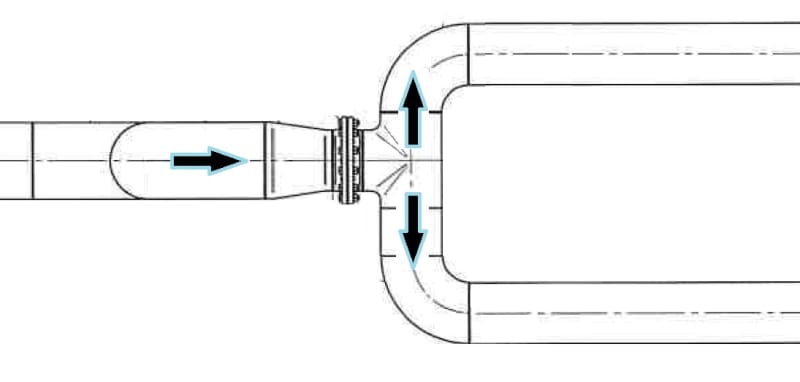Prototyp
Chemical
- Sep 15, 2016
- 29
A DN400 pipe splits into two DN300 pipes. Flow direction is from DN400 end towards the two DN300 ends (figure). Unfortunately due to space limitations the reduction was mounted before the tee at the DN400 end instead of after the tee. Maximum flow will be 972 m³/h at 8 bar of oil (viscosity ~20 cSt).
Could this turn out a problem during operation?

Could this turn out a problem during operation?

